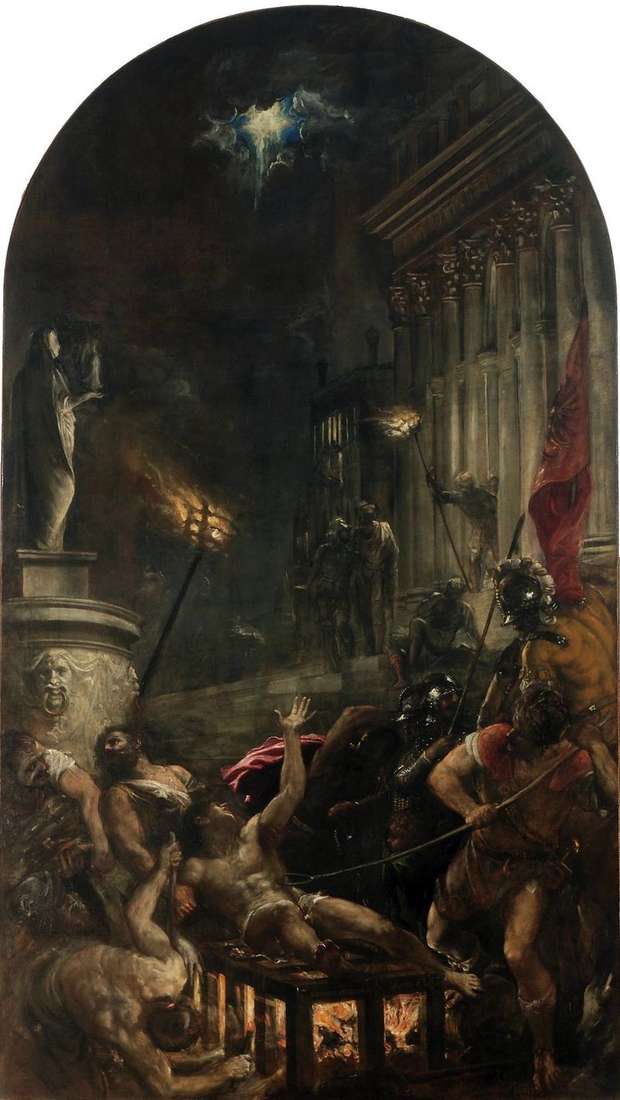
The painting “The Martyrdom of St. Lawrence” was written for the now demolished Crociferi Church in Venice. In his last years Titian seemed preoccupied with the fate of those who openly disobeyed the authorities.
In the presented work, a desperate attempt is shown, in this case from the forces of paganism, the secret suppression of dissent at night away from the general review. Turning the figures from the right upper corner to the lower left reinforces the bend of the trident, stabbed into the ribs of St. Lawrence, and the martyr’s face is bitterly anguished, despite the realization of its salvation when a ray of light breaks through the cloud cover.
Perhaps the picture is based on the work of the early Christian poet Prudence “The Passion of St. Lawrence,” in which martyrdom symbolized the transition from paganism to Christianity.
Titian took the opportunity to pay tribute to the King of Spain, Philip II, who on August 10, 1557, on the feast of St. Lawrence, defeated the French army at the Battle of Saint-Kenten. Two soldiers on the right wear Spanish armor, and on their red banner the black eagle of the Habsburgs is depicted.
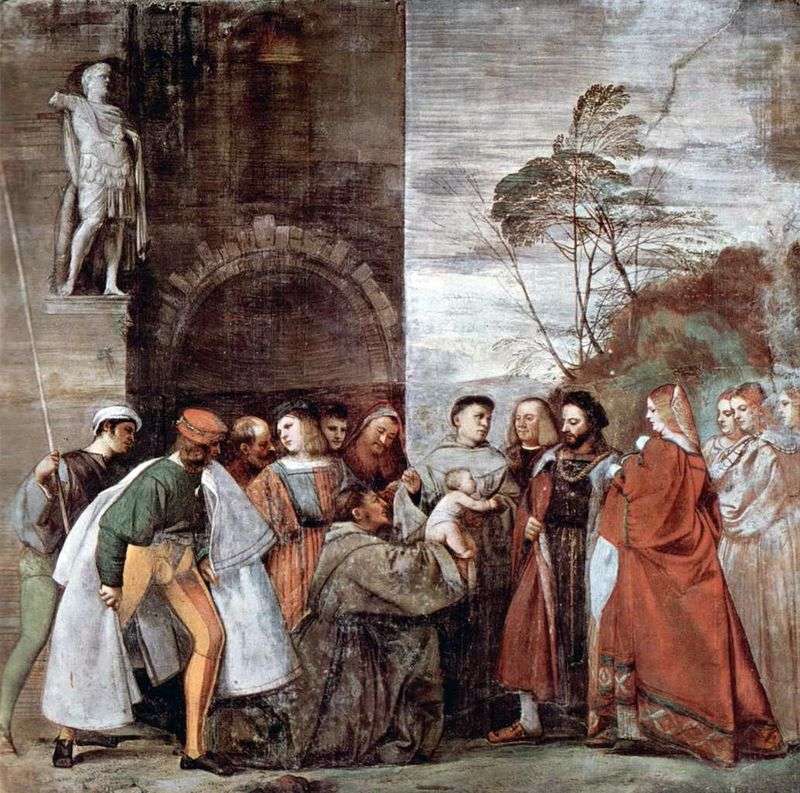 A miracle with a talking newborn who removes from his mother an accusation of adultery by Titian Vecellio
A miracle with a talking newborn who removes from his mother an accusation of adultery by Titian Vecellio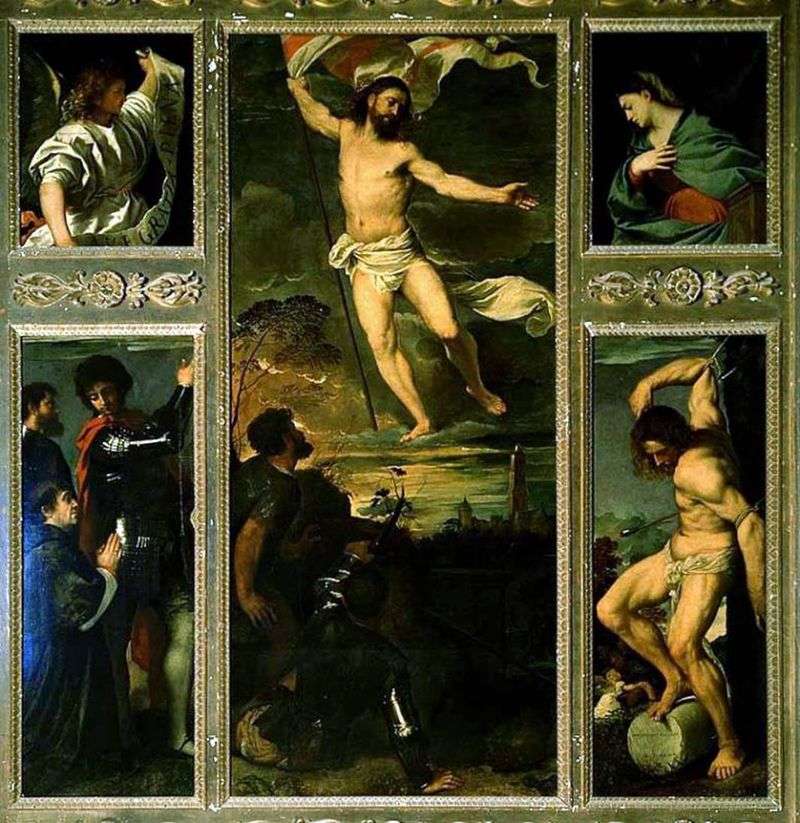 Polyptych Resurrection by Titian Vecellio
Polyptych Resurrection by Titian Vecellio Escape to Egypt by Titian Vecellio
Escape to Egypt by Titian Vecellio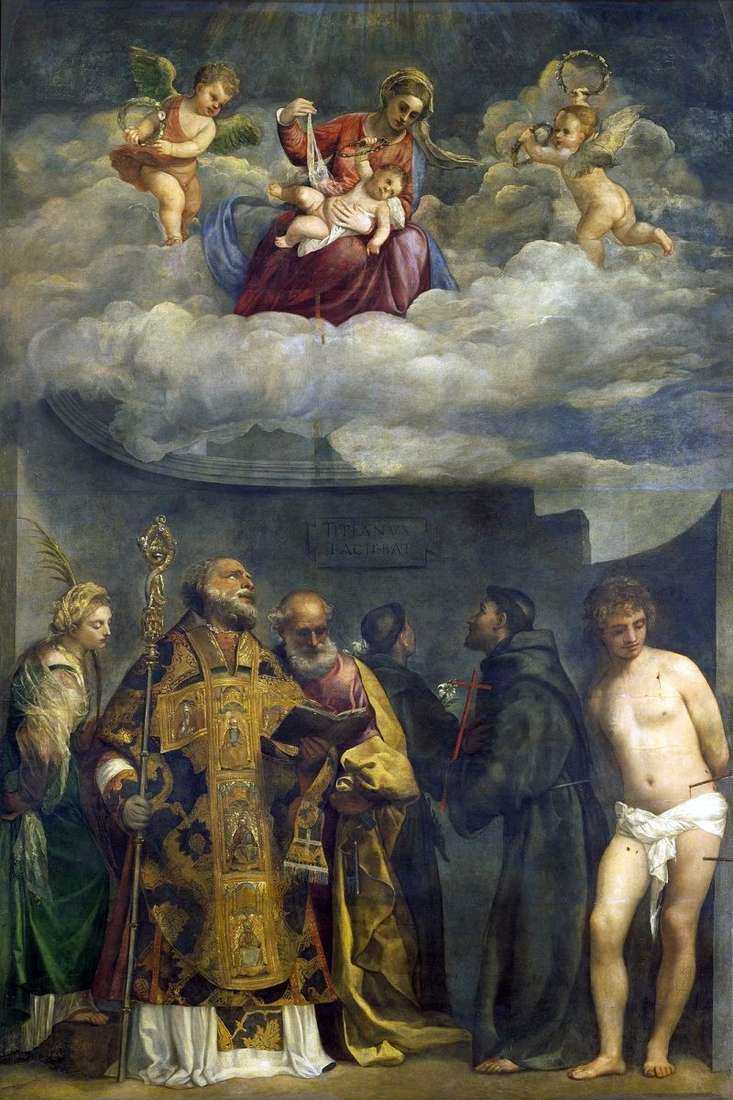 Madonna and Child and Saints by Titian Vecellio
Madonna and Child and Saints by Titian Vecellio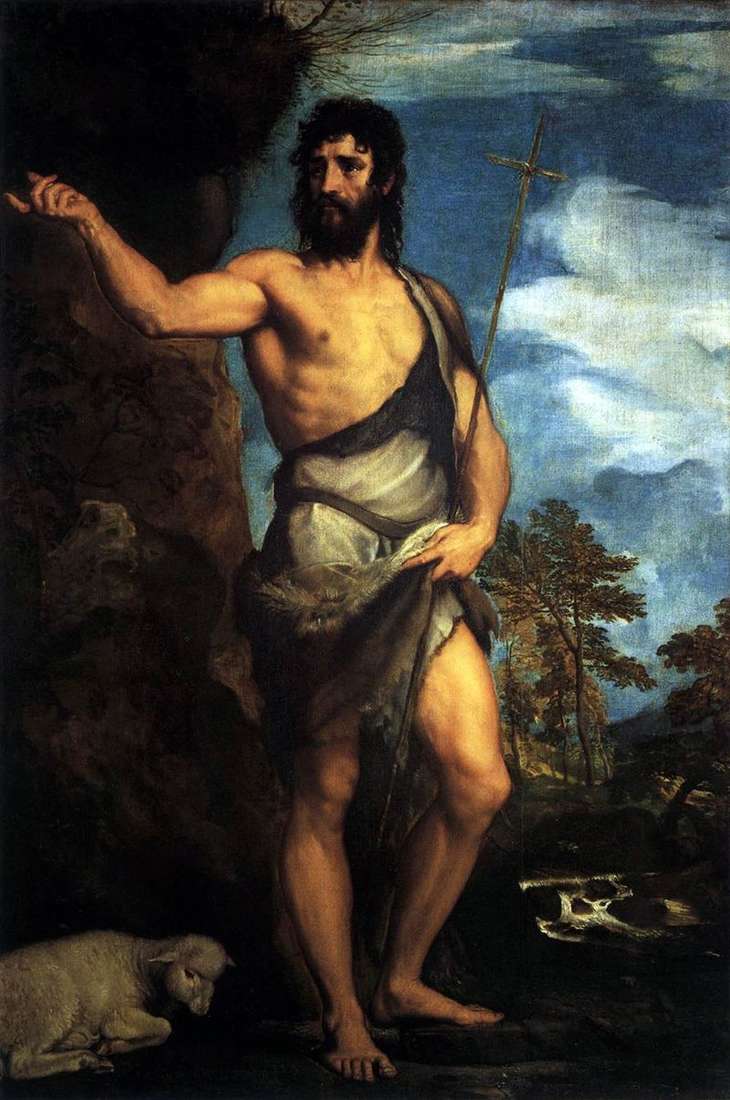 St. John the Baptist in the Wilderness by Titian Vecellio
St. John the Baptist in the Wilderness by Titian Vecellio Portrait of the daughter of Titian Lavinia by Titian Vecellio
Portrait of the daughter of Titian Lavinia by Titian Vecellio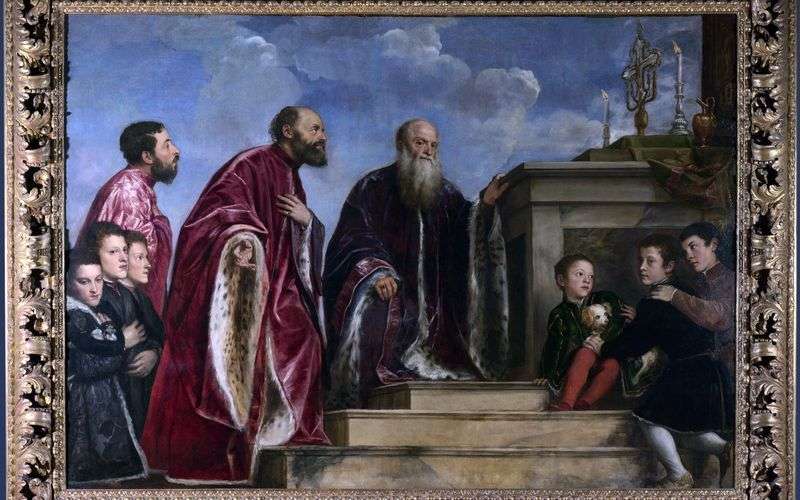 Family members before the relic of the Holy Cross by Titian Vecellio
Family members before the relic of the Holy Cross by Titian Vecellio Portrait of the Urbinian Duke Francesco Maria della Rovere by Titian Vecellio
Portrait of the Urbinian Duke Francesco Maria della Rovere by Titian Vecellio